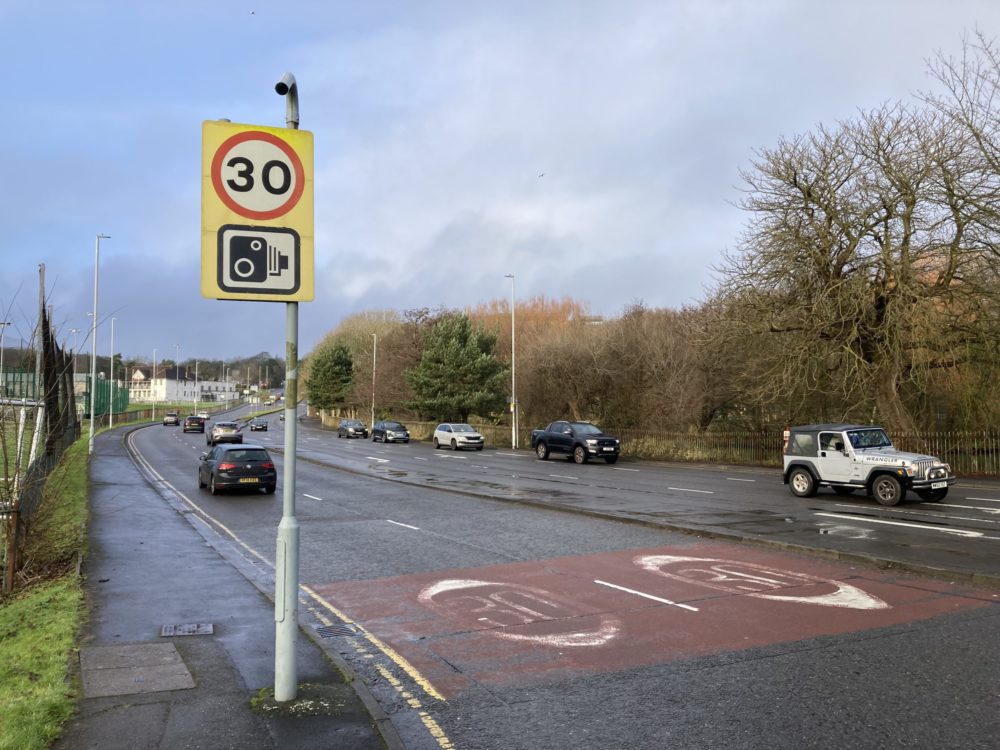Why more sinkholes are appearing and other road maintenance issues

Richard Youle, local democracy reporter
Intense rainfall and “marginal” temperatures are causing more sinkholes and road maintenance issues, a council highways boss said.
Bob Fenwick said 30 to 40 sinkholes were appearing per year compared to five or six minor ones and two or three slightly bigger ones in the past.
Mr Fenwick, group leader for highways maintenance in Swansea, said it was the intensity of rainfall and “groundwater moving in different ways” which were causing sinkholes.
A new highways asset management plan presented to a council committee said upgrading the county’s road network commensurate with flood risk would cost tens of millions of pounds. Mr Fenwick said preventative work, such as cleaning out gulleys in Killay Square, Killay, a day before heavy rainfall had avoided flood events.
Temperature flip
Mr Fenwick said roads were also impacted by marginal temperatures of just above and just below zero degrees centigrade, which often occurred in winter in Swansea. This slight temperature flip allowed moisture to enter tiny grooves in the surface and freeze, expand, and then thaw, causing damage.
The council manages a network of just under 700 miles of roads, which the report described as a £2bn-plus asset. But it’s also a cost. Mr Fenwick said the maintenance backlog had grown to £70-75m but that this was due to rising costs. The actual condition of the network, he said, “has remained pretty stable” in the last 10 years.
Councillors on the economy and infrastructure service transformation committee heard that the highways department did what it could with the budget available. This involved a combination of preventative and reactive work. “The more we can do with preventative measures the better,” said Mr Fenwick.
Core funding
He said the council no longer received Welsh Government core funding for highways worth £3.5m per year but added that the authority had stepped in and “refilled” this gap as much as it could. The council has, according to its website, received a Welsh Government highways grant of between £1.19m and £1.89m over the last few years.
The highways department has a programme of planned road repairs. A new three-year programme is due to be published in 2025. Mr Fenwick said road resurfacing schemes were prioritised on the basis of a score which took into account factors such as flow of traffic, whether they were outside a key asset like a hospital or school, and how many reports the department had received about their condition.
Swansea’s road network is slowly expanding but Mr Fenwick said there hasn’t been a big traffic increase in recent years. He said the growth in “generally heavier” electric vehicles would cause extra road wear and tear, especially where traffic calming measures were present due to traction forces.
The highways asset management plan said more than 95% of repairs to potholes were carried out within 48 hours of them being reported on the basis they were genuine pothole issues and on publicly-maintained roads. It added that “immediate risk to life or limb” road safety defects were repaired within 24 hours. The target for other safety defects starts at 21 days depending on the significance of the route and the nature of the defect.
Road maintenance facts and figures
Swansea Council manages a 690-mile road network, 932 miles of pavements, and around 75 miles of cycle routes.
The road maintenance backlog is currently £70-75m.
The council’s highways assets also include 26,023 street lighting columns, 221 bridges and culverts, an estimated 448 retaining walls, and around 40,000 drainage gulleys.
Nine bridges require strengthening, nine are in a very poor condition and need major refurbishment works, and 35 are in a poor condition and require refurbishment.
The council’s road and pavement maintenance budget for 2022-23 was just over £9m, according to its website.
The council receives around 10,000 phone calls from the public about its roads per year.
Motorists submitted 94 compensation claims to the council relating to damage caused by roads in 2022-23. It paid out a total of £388.
Support our Nation today
For the price of a cup of coffee a month you can help us create an independent, not-for-profit, national news service for the people of Wales, by the people of Wales.








Like the BBC (Merthyr one) Bob Fenwick is wrong to use the term “sinkholes”. That’s a natural hole as a result of underground erosion of underlying strata. Common in areas that have water soluble rock like limestone (caves) or chalk. Swansea has none of these. There is however, man-made underground culverts a legacy of a previous industrial hereitage. If these are not maintained or when they come to the end of their useful life then they will collapse. Does not become apparent until there’s a normal surge in flow during a wet period. You then get flooding or the water finds… Read more »